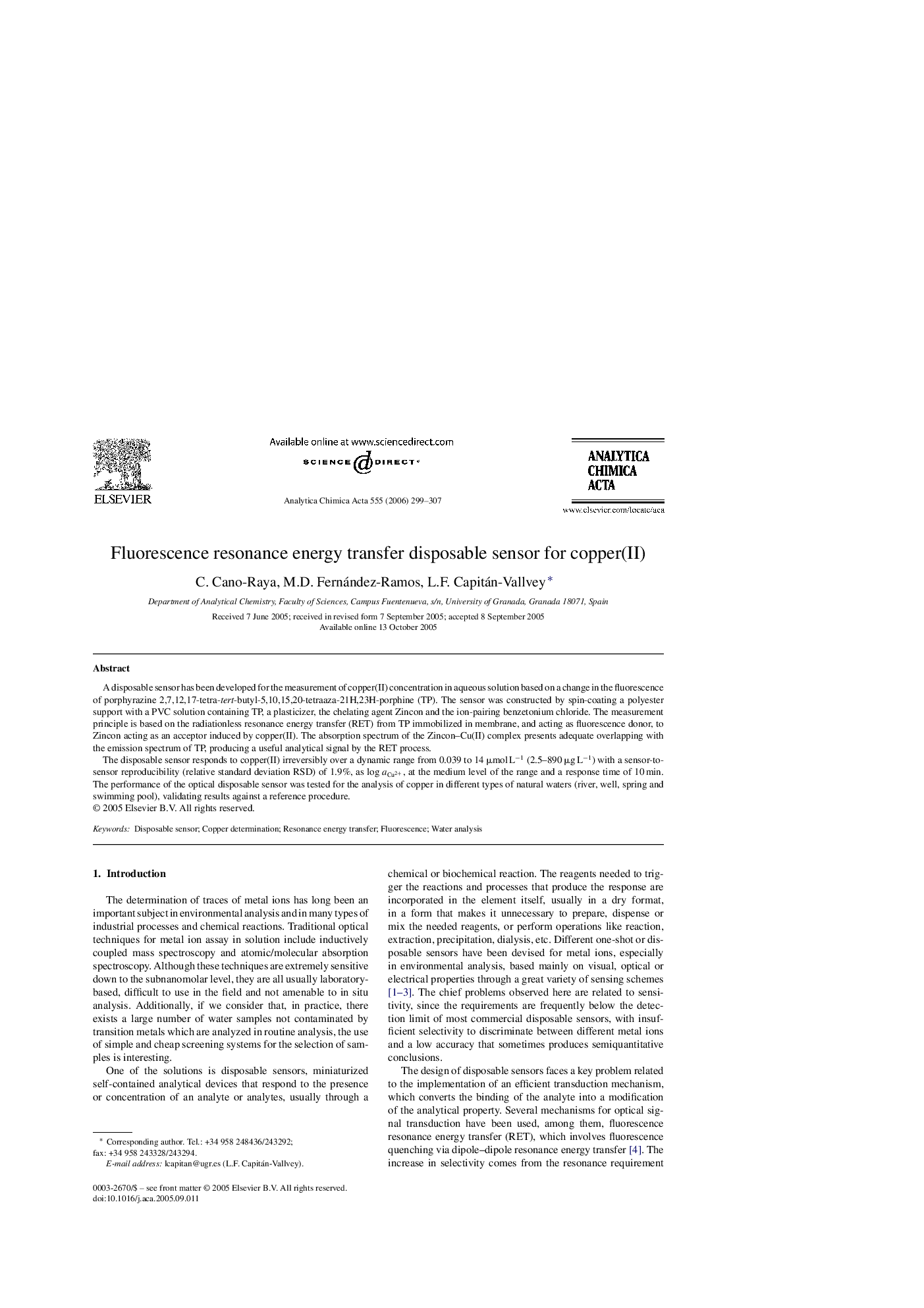| Article ID | Journal | Published Year | Pages | File Type |
|---|---|---|---|---|
| 1171940 | Analytica Chimica Acta | 2006 | 9 Pages |
A disposable sensor has been developed for the measurement of copper(II) concentration in aqueous solution based on a change in the fluorescence of porphyrazine 2,7,12,17-tetra-tert-butyl-5,10,15,20-tetraaza-21H,23H-porphine (TP). The sensor was constructed by spin-coating a polyester support with a PVC solution containing TP, a plasticizer, the chelating agent Zincon and the ion-pairing benzetonium chloride. The measurement principle is based on the radiationless resonance energy transfer (RET) from TP immobilized in membrane, and acting as fluorescence donor, to Zincon acting as an acceptor induced by copper(II). The absorption spectrum of the Zincon–Cu(II) complex presents adequate overlapping with the emission spectrum of TP, producing a useful analytical signal by the RET process.The disposable sensor responds to copper(II) irreversibly over a dynamic range from 0.039 to 14 μmol L−1 (2.5–890 μg L−1) with a sensor-to-sensor reproducibility (relative standard deviation RSD) of 1.9%, as log aCu2+log aCu2+, at the medium level of the range and a response time of 10 min. The performance of the optical disposable sensor was tested for the analysis of copper in different types of natural waters (river, well, spring and swimming pool), validating results against a reference procedure.
